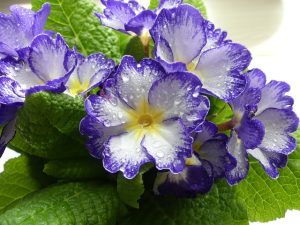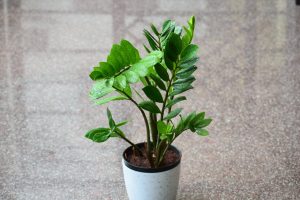In this post, we’ll explore a rich array of annual flowers that flourish in Zone 6, giving you the tools to create a stunning floral display.
Verbena (Rose Vervain)
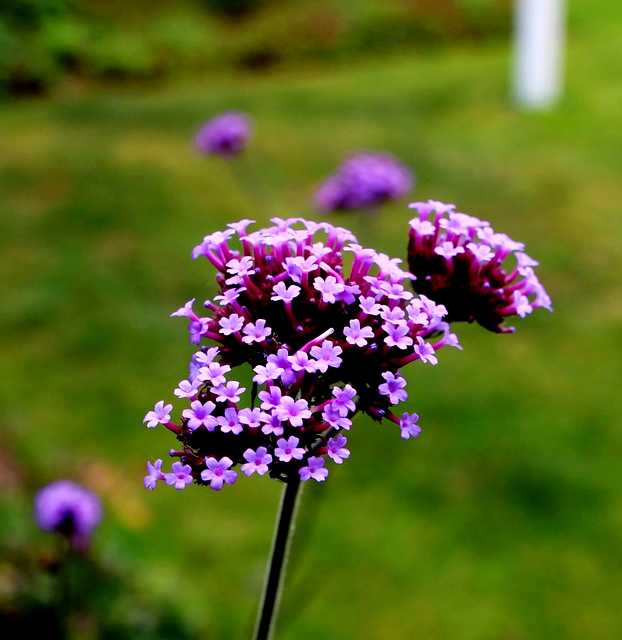
Verbena, especially the popular Rose Vervain, is a fantastic choice for any Zone 6 garden. These resilient flowers boast clusters of small blooms in vivid shades of purple, pink, and white that not only attract butterflies but also bring an added touch of elegance. They thrive in full sun and well-drained soil, making them easy to care for.
One of the most appealing features of verbena is its long blooming period, often lasting from late spring until frost. They can be used as ground cover, in borders, or in hanging baskets, spilling over beautifully with cascading flowers. Moreover, verbena is drought-tolerant, meaning it can withstand periods of dry weather. To encourage even more blooms, it’s advisable to deadhead regularly, promoting a bushier plant. Verbena’s resilient nature makes it a must-have for your garden.
Wild Geranium
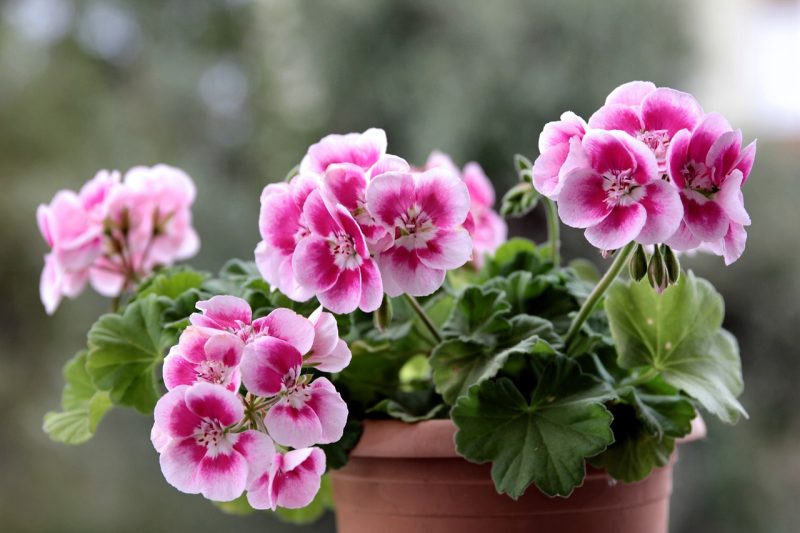
With delicate lavender-hued flowers, Wild Geranium (Geranium maculatum) adds a touch of wild beauty to any Zone 6 garden. Although often dismissed as a common weed, this charming annual flower deserves a place in your garden due to its hardiness and adaptability. The intricate foliage provides a lovely backdrop that enhances the flowers’ beauty.
These plants thrive in partial shade to full sun and prefer moist, well-drained soil. The Wild Geranium blooms from spring until early summer, offering a spectacular show that can attract pollinators like bees and butterflies. Furthermore, they are quite low-maintenance, making them ideal for novice gardeners. Their natural charm brings a friendly and inviting atmosphere to any landscape.
Calendula (Pot Marigold)
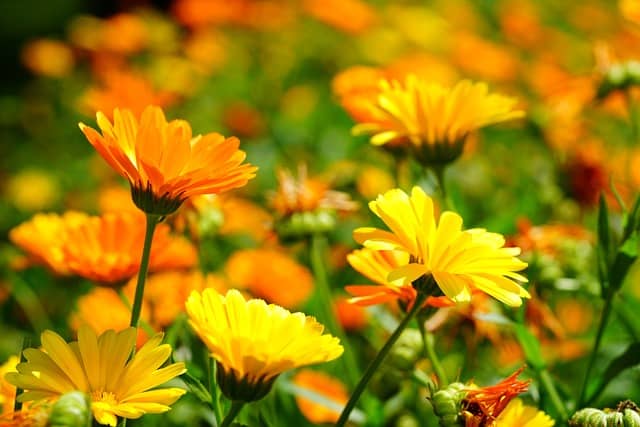
Calendula, commonly referred to as Pot Marigold, is a sun-loving annual flower that dazzles with its bright orange and yellow blooms. This cheerful flower not only adds warmth to garden beds but also provides a host of benefits. Known for attracting beneficial insects and pollinators, Calendulas are a great ally in organic gardening.
Apart from their stunning visual appeal, these flowers have culinary uses. The petals are edible and can be used to enhance salads or as a colorful garnish. Calendulas are hardy and can withstand cooler temperatures, making them perfect for those early spring plantings. They flourish in full sun and well-drained soil, requiring minimal care beyond occasional deadheading to encourage new blooms. Their resilience and beauty make Calendula a beloved choice in Zone 6 gardens.
Cleome (Spider Plant)
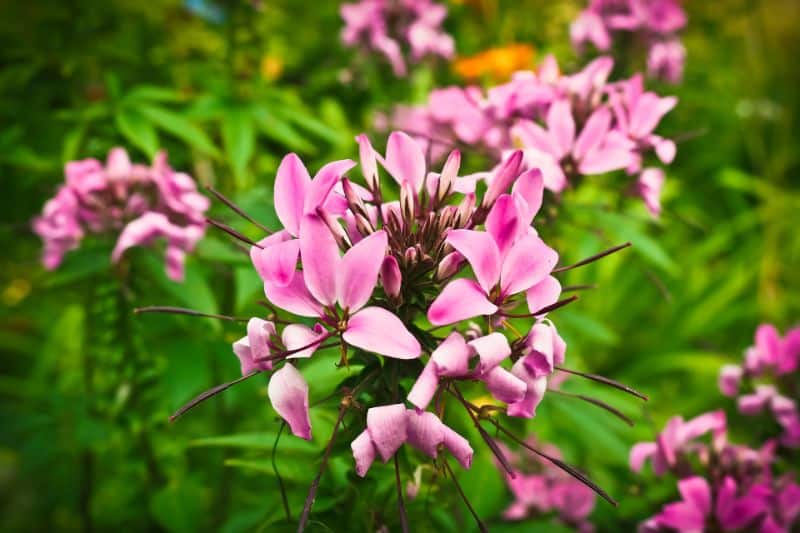
Cleome, often known as Spider Plant due to its unique spiky flowers, offers a striking visual presence in any garden. These plants produce tall, airy blooms in shades of pink, white, and lavender, creating a dynamic vertical element that can add depth to your planting design.
Cleomes thrive in full sun and can tolerate light shade, preferring well-drained soil. They are a fantastic choice for attracting pollinators and can even sparingly self-seed, ensuring that they return the following season. These annuals are also relatively pest resistant, offering a stress-free gardening experience. With their distinctive appearance and ability to reach heights of 3-5 feet, Cleome is perfect for the back of borders or as a focal point in your garden.
China Aster
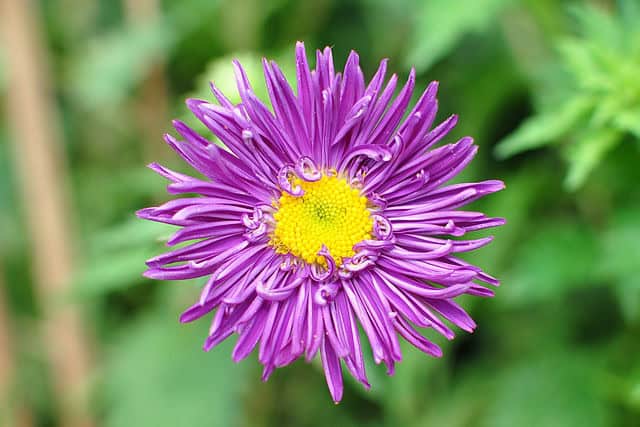
The China Aster is a radiant annual flower that brings rich colors and textures to Zone 6 gardens. Available in a spectrum of colors—from vibrant purples to gentle pastels—China Asters create a bright palette that can enhance the aesthetics of any garden design. They are popular for cut flower arrangements, delivering elegance to both gardens and bouquets.
Best planted in full sun, China Asters flourish in rich, well-drained soil. They bloom from mid-summer until frost, providing a long-lasting cascading effect. Regular deadheading can significantly increase blooming, extending your floral display throughout the season. This flower variety is also known for its ability to attract butterflies, making it a spectacular addition for those looking to create a vibrant ecosystem in their garden.
Morning Glory
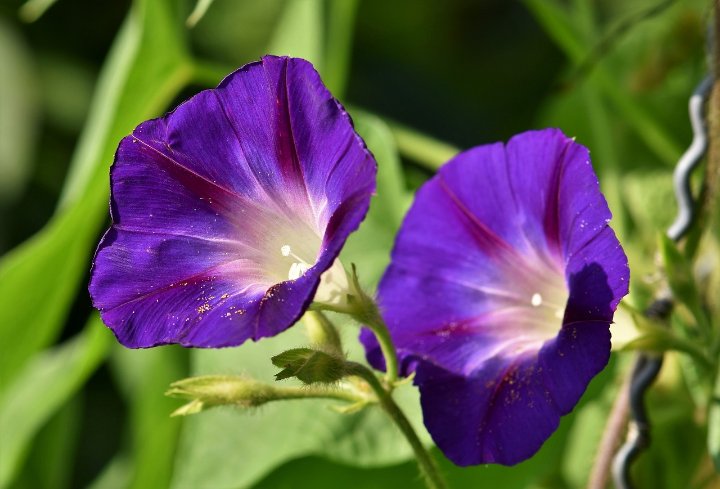
Morning Glory is a classic annual flower, known for its heart-shaped leaves and stunning trumpet-shaped blooms that can fill your garden with color. Available in shades of blue, purple, pink, and white, these vines are a spectacular choice for adding vertical interest to trellises, fences, or arbors.
These flowers thrive in full sun and prefer well-drained soil. With a growth habit that can reach heights of 10 feet or more, Morning Glories are perfect for creating lush and inviting vertical gardens. They bloom in the morning, closing in the afternoon, hence their name. This delightful routine adds a charming touch to your morning gardening ritual. Additionally, they are low-maintenance, requiring minimal watering once established, making them an attractive option for busy gardeners.
Torenia (Wishbone Flower)
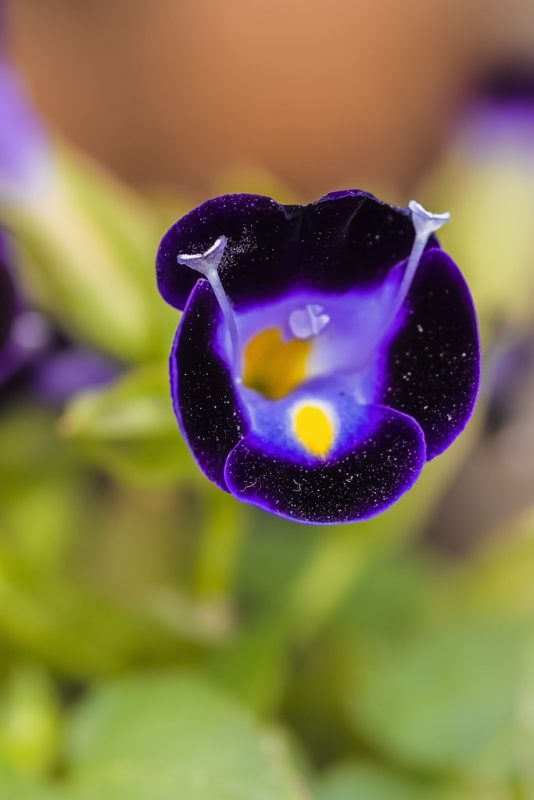
Torenia, commonly referred to as Wishbone Flower, is a delightful addition to any Zone 6 garden. Known for its striking two-lipped flowers, Torenia bursts into bloom with colors ranging from yellow and blue to lavender and white. They are particularly well-suited for shaded areas, making them a great option for filling in spots where other flowers may struggle to grow.
These annual flowers thrive in moist, well-drained soil and bloom from late spring until frost. With their unique shape and beautiful coloration, Torenia is an excellent choice for hanging baskets, containers, or as an edging plant where their colors can be appreciated up close. Their low growth habit and spreading nature create fullness in planting areas, ensuring your garden remains vibrant throughout the season.
Common Sunflower
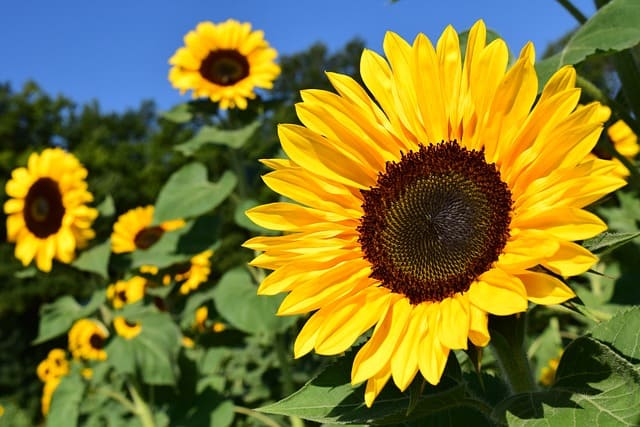
The Common Sunflower (Helianthus annuus) is a stunning symbol of summer, bringing warmth and brightness to gardens in Zone 6. These bold annuals can grow to impressive heights, showcasing large, vibrant yellow blooms that track the sun throughout the day. Their tall stature works well at the back of borders or as a standout centerpiece in your landscaping.
Sunflowers are relatively easy to grow; they prefer full sun and well-drained soil. They germinate quickly and grow rapidly, giving quick gratification to gardeners. Additionally, sunflowers are excellent for attracting pollinators like bees and butterflies and can even provide seeds for local birds. Their cheerful disposition adds a joyful component to your garden space, making it feel lively and inviting.
Zinnia (Benary’s Giant)
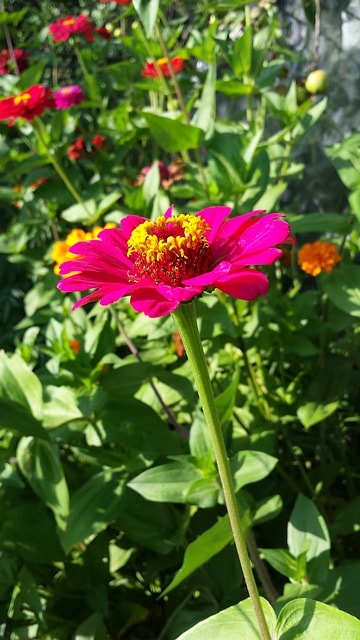
Zinnias, particularly the Benary’s Giant variety, are some of the most beloved annual flowers for gardens in Zone 6. Known for their bold colors and unique shapes, these flowers provide a spectacular display throughout the summer months. They are particularly prized for their resilience against disease and versatility in garden settings.
Zinnias thrive in full sun and well-drained soil, making them perfect for sunny borders and colorful cut flower gardens. They can grow in various heights, making them adaptable for different planting schemes. The Benary’s Giant variety features large blooms and robust stems, making them excellent for cutting and floral arrangements. Regular deadheading encourages continued blooming throughout the summer, providing a cheerful burst of color and joy in your garden.
Nasturtium
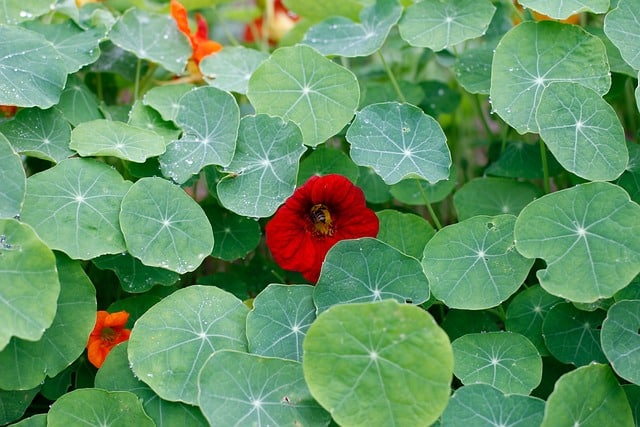
Nasturtiums are whimsical, trailing annual flowers that bring a unique charm to any Zone 6 garden. With their round leaves and brightly colored blooms in shades of orange, red, and yellow, they create a visual feast that delights gardeners and visitors alike. Additionally, Nasturtiums are edible, and both the flowers and leaves offer a peppery flavor that can add a fresh element to salads and garnishes.
These flowers thrive in full sun but can tolerate partial shade, making them versatile for various garden settings. They prefer well-drained soil and are drought-tolerant once established. Nasturtiums can also act as natural pest deterrents, helping to protect neighboring plants. With their easy cultivation, beautiful blooms, and culinary uses, Nasturtiums are a fantastic addition to any garden.
Moss Rose
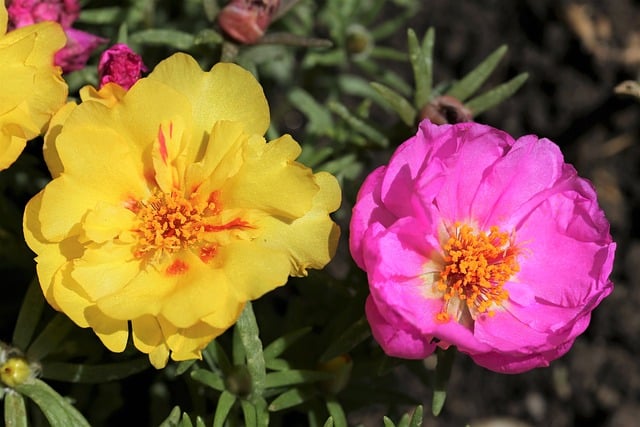
Moss Rose, also known as Portulaca, is a charming annual flower that thrives in sunny spots throughout Zone 6. With succulent leaves and vibrant colors reaching from pink to yellow and red, these flowers create a stunning display in rock gardens, borders, or edging. The Moss Rose is drought-tolerant, making it perfect for water-wise gardens and those with less maintenance.
These flowers are low-growing and spread beautifully, creating a carpet of color that can enhance any garden landscape. They prefer well-drained soil and full sunlight, making them ideal for hot climates. Regular deadheading will encourage continuous blooming, providing cheerful color throughout the summer months. Moss Rose’s unique beauty and hardy nature make it a delightful choice for any gardener.
Euphorbia (Snow on the Mountain)
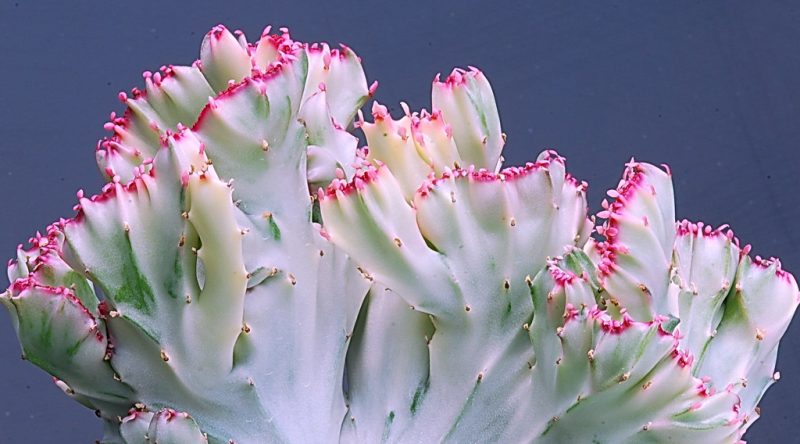
Euphorbia, commonly known as Snow on the Mountain, offers unique foliage that can add diversity and texture to your Zone 6 garden. With its striking white-edged leaves and small green flowers, Euphorbia provides a wonderful contrast to more colorful blooms in your garden.
This hardy plant prefers well-drained soil and full sun, showcasing its beauty from early spring until frost. It requires minimal maintenance, making it ideal for busy gardeners or those looking for low-care options. Euphorbia is also resistant to pests and drought, making it a resilient choice. The foliage can provide great visual interest, especially when paired with flowering plants, ensuring your garden remains captivating all season long.



